On 12 April, 1961, Baikonur Cosmodrome in what is now Kazakhstan picked up a transmission that changed human history. “I can see the clouds. I can see everything. It’s beautiful!” Spoken in a youthful Russian voice, those words came from a place no human had ever gone before. Sat 327 km above the surface of the Earth, Yuri Gagarin had just become the first man to ever visit space. Outside his window, our planet hung brilliant blue against the cold darkness of the universe. Thanks to this one Russian pilot, mankind would now have a whole new frontier to explore; a frontier we’re still trying to tame six decades later.
Today, the name Yuri Gagarin remains world famous, up there right beside Neil Armstrong in terms of amazing firsts. But who really was this Soviet spaceman, and how did he come to be sitting in that capsule? Born into a poor peasant family on the eve of WWII, Gagarin could’ve easily never amounted to much. But thanks to the sheer force of his talent, he wound up changing history. In the video today, Biographics is strapping into its Soyuz and aiming for the stars, as we uncover the life of the very first spaceman.
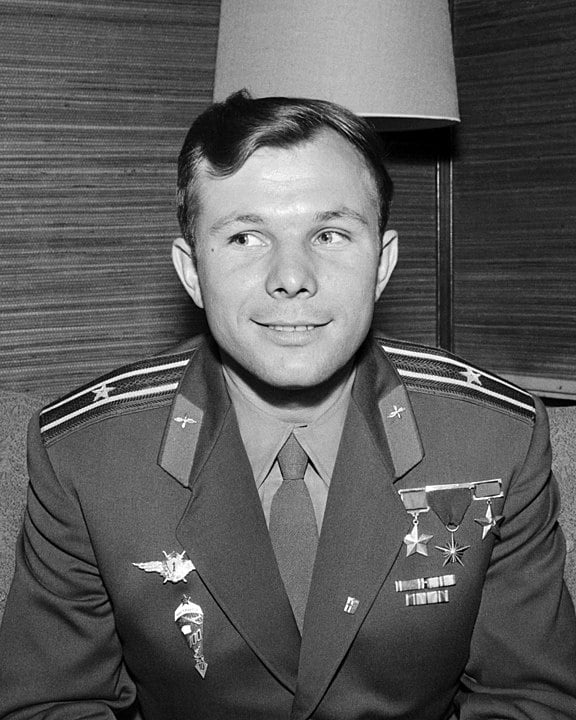
Hard Times
If you were picking a time and place in which to be born, 1934 and Klushino would probably be far down your list. That’s because Klushino is a poor village in western Russia. The sort of place where hens roam the streets and living in a weathered wooden shack is practically a luxury.
But it’s also because Klushino at this particular point in time was undergoing a painful decade.
In 1934, the Soviet countryside was already in the throes of a Stalinist agricultural shakeup that resulted in a whole ton of poverty and famine. In just a few years, it would be shaken up even harder, when Nazi Germany invaded.
But we’re getting ahead of ourselves.
For now, just know that when Yuri Gagarin was born in Klushino on March 9, 1934, it wasn’t into circumstances that screamed “hey, isn’t this great!”
The third of four children, Gagarin was the son of a carpenter and a milkmaid, both of whom worked on the nearby collective farm. This being Soviet Russia, that meant doing backbreaking work for a pittance while wallowing in poverty. It’s been suggested the reason Gagarin never grew beyond 157 cm – or 5ft 2 in old money – was down to childhood malnutrition.
Yet, despite this unpromising start, the boy Yuri seems to have been relatively content.
One feature everyone who encountered him seems to remember is that he was always smiling. A big, open smile that would one day win him friends across the globe. But first the boy would have to survive a period in which there was very little to smile about.
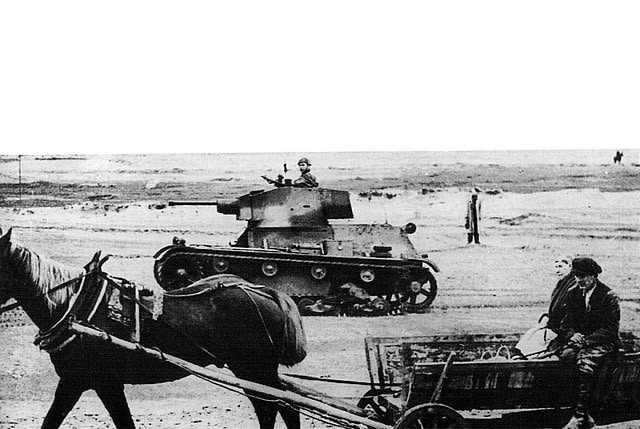
On June 22, 1941, when Gagarin was only 7, Nazi Germany launched a surprise invasion of the Soviet Union.
For the first couple of years of WWII, Hitler and Stalin had been allies. But now, as Panzer tanks rolled across the flat grasslands of Ukraine, Belarus, and Russia, all the hatred between the two came bubbling out.
When the German frontlines reached Klushino, the Nazis threw the Gagarin family out their home, forcing them to build a mud hut a mere 3 meters square to live in.
Gagarin’s two older siblings were arrested and sent as slave labor to camps in Poland.
When Gagarin and his younger brother Boris were caught trying to sabotage German vehicles by sticking potatoes up their tailpipes, an enraged soldier tried to hang Boris from an apple tree. It was only when Gagarin’s parents begged on their knees for their five year old son’s life that the Nazis relented.
Yet even amid the apocalyptic horrors of life on the eastern front, Gagarin still managed to find inspiration. One clear day, a pair of German Messerschmitts were engaged by two Soviet Yaks in a dogfight high above Klushino.
One Nazi plane was destroyed in the fight, while one of the Yaks was shot down.
Like the rest of the villagers, 7-year old Gagarin rushed to help the downed Soviet airman. But when he reached him, the boy couldn’t move. Couldn’t do anything but stare at this impossible man who’d fallen out the sky.
It’s said that this was the moment Yuri Gagarin first decided to become a pilot.
Finally, in 1945, Germany was defeated and peace declared in Europe.
In the aftermath of the Nazi occupation, Gagarin’s dad decided to move the entire household to the town of Gzhatsk. Like, literally. Mr. Gagarin sawed up the family’s wooden shack, transported it bit by bit to Gzhatsk, and rebuilt it by hand for them to live in.
It would be from this humble, reconstructed shack on the fringes of this anonymous town that Yuri Gagarin would truly begin his journey to the stars.
The Sky’s the Limit
Compared to the deprivation of Klushino, Gzhatsk was practically a paradise.
There was work for Gagarin’s parents. A sizeable school where Yuri could make friends and meet girls. There was also an aviation club the teenager joined, where he learned all about aircraft despite being too young to fly.
Not that he yet seemed pilot material.
When Gagarin left school at 16, it wasn’t to enroll in the Air Forces.
It was to train to be a foundryman, a decent enough job in the USSR, but not one that usually leads to a YouTube channel in the far future doing videos on you. Gagarin, too, must’ve sensed this was a dead end. After a single year, in 1951, he transferred away from his studies, away from his family, all the way down the the brand-new technical school in Saratov.
Supposedly, he was there to study tractors. But were you to ask the teenage Gagarin anything about them, he’d have probably just given you one of his trademark shy smiles.
That’s because Gagarin was really in Saratov for one reason. The school’s shiny new flight club. Unlike the aviation club in Gzhatsk, the bigger one down in Saratov really did allow its students to fly planes.
For the first time in his life, Yuri Gagarin took to the skies onboard a Yak-18. Looking back later, he would say:
“That flight filled me with pride and gave meaning to my whole life.”
When Gagarin finally graduated, no-one harbored any illusions that he was gonna be a tractor repairman. In 1955, aged 21, Gagarin enrolled in the Pilots School in Orenberg.
The mid-50s were a time of great change in the USSR.
Two years before, Stalin had died. In just one more year, Nikita Khrushchev would make his Secret Speech, beginning a thaw that would see long-lost freedoms regained. Maybe it was the mood in the entire nation, but Gagarin seems to have blossomed in Orenberg.
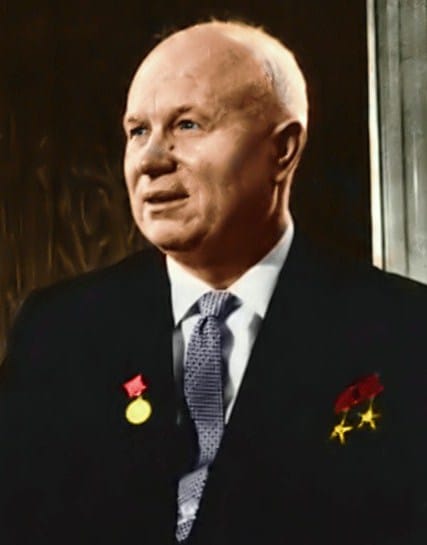
It was while at pilot school that he met Valentina Goryacheva, and so turned her head that she fell for him without ever really knowing why.
It was there, too, that Gagarin took his first solo flight in a MiG-15 jet, an experience that made even his virgin flight in the Yak-18 appear trivial. By 1957, Gagarin was lucky in love, and cruising through his studies. He was recognized as a brilliant pilot, despite his short stature meaning he had to sit atop a cushion to see out the cockpit.
And this was perfect timing. Because 1957 was when mankind finally began looking upward.
On August 21, the world’s first intercontinental ballistic missile was launched in the USSR. Designed by the ultra-secretive rocket genius Sergei Korolev, the R-7 “Semyorka” was a breakthrough in weapons technology that left the USA eating Soviet dust.
But while Moscow loved the R-7 for its offensive capabilities, Korolev wanted to use it to expand mankind’s horizons. That October, another Korolev rocket blasted off from the Baikonur launchpad in what is now Kazakhstan.
But rather than carrying a warhead, it was carrying a small metal orb the size of a beachball.
That day, Sputnik 1 became the first manmade satellite in orbit. It was a moment that changed everything, marking the dawn of the Space Age. But Korolev wasn’t done yet. He had another goal, one so secret, so preposterous, that only a handful of people knew about it.
Korolev wanted to send a man into space.
It was this impossible dream that would soon transform Yuri Gagarin’s life.
Searching for Starman
Two years after Sputnik’s launch, in October of 1959, groups of mysterious recruiters began fanning out across the USSR, looking for pilots. By now, Yuri Gagarin was a lieutenant in the Soviet Air Forces, based in chilly Murmansk in the Arctic Circle.
He and Valentina had married three weeks after Sputnik’s launch, and their lives were now as good as they’d ever dreamed. Then these mysterious recruiters came knocking at Gagarin’s base, and everything was turned upside down.
Alongside his comrades, Gagarin was subjected to a battery of tests, physical and mental, that were so strenuous few could pass them.
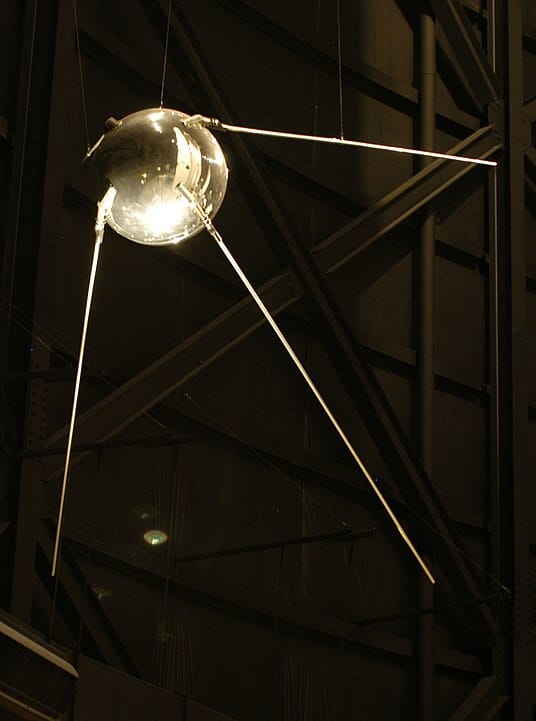
When those were done, the successful pilots were sent to Burdenko military hospital in Moscow, where Gagarin later recalled:
“They tapped our bodies with hammers, twisted us about on special devices and checked the vestibular organs in our ears… They tested us from head to toe.”
By the time the tests were over, only 20 pilots remained. 20 pilots from across the USSR, the creme-de-la-creme of Soviet airmanship. It was now clear to the remaining pilots what all this was about.
They were in the running to be the first-ever cosmonaut.
Shortly after passing his medical, Gagarin and Valentina left behind their cold, comfortable lives in Murmansk, and transferred to one of the most-secretive towns in Russia: Star City. A closed town, Star City was a place of luxury unparalleled even in Moscow; with well-stocked shops and vast apartments.
But while life in Star City may have been luxurious, it was also tough.
As the first astronaut training program in the world – America was still dicking about with chimpanzees at this stage – Star City’s trials pushed the 20 pilots to their limits. They endured G-forces even seasoned pilots had never experienced. Underwent physical tests so rigorous that most dropped out.
Eventually, only six remained, all of them short men. Apparently Korlov had gone and built a capsule so small no average-sized man could dream of fitting inside.
At last, those six short men became two: Yuri Gagarin and Gherman Titov.
Gagarin was convinced that Titov would be the one chosen. Possibly the best pilot in the USSR, he was intense, athletic, and educated. In another time, in another place, he likely would’ve gotten the job.
But this was the Soviet Union, the workers’ paradise.
When word got to Nikita Khrushchev – himself the son of peasants – that the choice had come down to a poor boy from the sticks, and a middle class intellectual, he supposedly told Korolev to forget Titov.
The first man in space would be Yuri Gagarin.
By the time word reached the two pilots, they’d decamped to Baikonur Cosmodrome, on the vast plains of the Kazakh Steppe, to prepare for the launch.
How exactly Titov took the news is a matter of some debate.
Although all accounts say he was outraged at the time, some claim he found peace with the snub in later life, while others say he died still bitter at being robbed of his place in the history books. Either way, on April 12, 1961, it was Gagarin who got out of bed knowing he had a date with destiny.
The Spaceman
If your idea of rocket launches comes via Hollywood, you might be picturing Yuri Gagarin sat in his capsule, listening to a countdown before liftoff. But that image would be entirely wrong, as Korolev thought the idea of a countdown absurd American nonsense.
Instead, Gagarin sat there listening to Russian love songs, waiting for the final checks to finish.
That morning, he’d awoken at 05:30 am to get to the launchpad. There, he’d made time for a quick pee against the back of his bus, a bit of necessary business that every future cosmonaut would repeat in the hopes of getting some of Gagarin’s good luck.
Now Gagarin was sat atop a gigantic missile pointed at the stars, not knowing whether death or destiny awaited him.
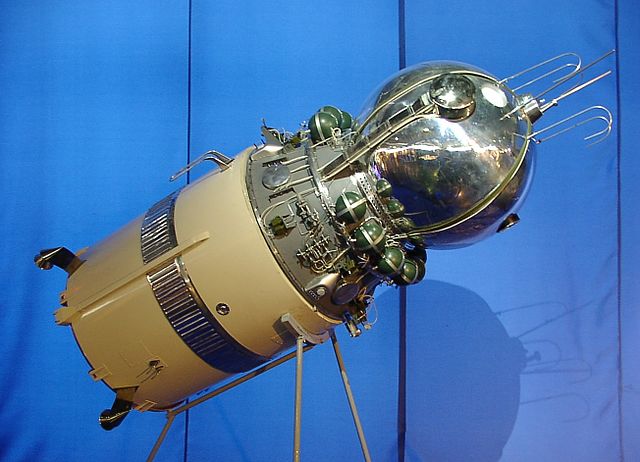
The original uploader was HPH at German Wikipedia. – Transferred from de.wikipedia to Commons., CC BY-SA 3.0
At exactly 09:06 am, Korolev punched the ignition key. There was no warning. Just the sudden jolt of the rocket, a roar of noise that seemed to fill the universe…
…and then Yuri Gagarin was blasting upwards, leaving Earth behind in a way no human had ever done before.
Although he later claimed to have no memory of it, he was heard screaming “Poyekhali!” – an informal Russian word that roughly translates as “Let’s roll!”
A little over ten minutes later, the story of humanity had begun its newest chapter.
Outside the window, a giant swathe of bright blue impressed itself on the cosmonaut’s retinas. It was the Earth, seen for the very first time by human eyes as it really is. An orb in space, surrounded by endless darkness.
The radio crackled, and Korolev’s voice came on: “How are you feeling?”
And so Yuri Gagarin replied with the first words ever said in space:
‘‘The flight continues well. The machine is functioning normally. Reception excellent. Am carrying out observations of the earth. Visibility good. I can see the clouds. I can see everything.”
And then, most poignantly:
“It’s beautiful!’’
What it lacked in the poetry of “one small step for man, one giant leap for mankind,” it more than made up for in honesty. As Gagarin circled the Earth, he looked down on our world as no-one had seen it before. Today, we’re used to images of our planet taken from space; blasé about the idea that we can pull up 1,000 photos of the Earth just by googling.
But try to imagine how Yuri Gagarin, the peasant boy from the poor Russian village, must’ve felt. Try to grasp even the tiniest fragment of how the world must’ve appeared to him.
To say it was likely awe inspiring is almost trite. You’d probably need to invent whole new words to describe how Gagarin felt.
108 minutes after launch, Vostok 1 began its return to Earth.
It was here that Gagarin’s story almost ended. His capsule had been meant to separate, but a cable refused to break, and now he plunged back to Earth not as a streamlined dart, but as a tumbling, spinning, burning ball of metal.
In this out of control descent, Gagarin almost lost consciousness. But, through sheer luck, the high temperatures melted the cable, allowing him to regain control and then eject at the appointed moment. At 10:55 am, a Russian peasant woman living on the endless grasslands outside Gagarin’s old student city of Saratov looked up in astonishment as a short man in an orange suit floated down toward the Earth.
As this stranger landed right by her and removed his helmet, Anna Takhtarova managed to stammer: “Have you come from outer space?”
Beaming his great, wide smile, Yuri Gagarin nodded triumphantly.
“Yes,” he replied. “Would you believe it? I certainly have!”
Making a Star
The Americans were informed first. They had to be. Nobody wanted Gagarin to be mistaken for a missile and his successful flight to accidentally trigger WWIII.
But the Soviets made sure it wasn’t just Washington that got the news.
Even as Gagarin was watching the Earth from far up in Vostok 1, his astounded relatives back home were staring at the sky, praying for his safe return.
When it was confirmed the spaceman had survived his landing, the world went nuts. In Moscow, crowds poured into the streets, abandoning factories, offices, schools. Across the other cities of the Soviet Union, across the Warsaw Pact nations, then across the non-aligned states, and even in the west, people came together to celebrate this historic event.
Perhaps the only country where news of Gagarin’s flight was received coldly was the USA.
When NASA’s press office was phoned at 04:30am by journalists, a surly spokesman yelled into the phone “what is this! We’re all asleep down here!”
The headline the next day? “Soviets put man in space. Spokesman says US asleep.”
Within days, Yuri Gagarin was thrown a lavish parade in Moscow, where he was personally greeted by Nikita Khrushchev. After that, it was on to a world tour, and life as a living icon. Moscow sent Gagarin all over. He visited Soviet allies like Czechoslovakia, Bulgaria, Cuba, and Hungary, but also capitalist states like Canada, Iceland, and Great Britain.
But he never made it to America. Although Gagarin expressed a desire to visit, JFK banned him from entering the country.
Nothing like a sore loser, huh?
The Politburo’s plan was to turn Gagarin into a piece of propaganda; a demonstration of Soviet superiority. But their plan quickly hit a fatal bump.
Gagarin was just too damn nice.
Although he was a supporter of the system he lived in, Gagarin was mostly apolitical. He wasn’t the kind of guy to make speeches extolling the value of Soviet tractors, or what have you. Nah, he was far more likely to just give that wide, boyish smile of his, crack a few jokes, and win the hearts of everyone around him.
In this man who’d seen the stars, humankind came to see a universal symbol. Someone who brought them together even in the depths of the Cold War.
For Gagarin, though, life as an icon was hard.
Faced with a parade of celebrations honoring him across the planet he’d orbited, he turned to drink. Before his flight, Gagarin had been borderline teetotal, not wanting to mess with his flying.
After landing, he spent half a year more or less permanently drunk.
It was a mental state that would cause him to make a dangerous mistake. In September, 1961, Gagarin was in Crimea for yet more celebratory parties. Sozzled out his mind, he followed a gorgeous young blonde named Anna back to her hotel room on the second floor.
When Valentina burst in, the spaceman tried to escape by leaping out the nearest window, only for his foot to catch and send him plunging headlong to Earth. The cracked concrete impacted sickeningly against Gagarin’s forehead, leaving him permanently scarred. When he came to in the hospital, his brain was so scrambled he initially thought he’d never fly again.
But, no. The gods were, for now, still smiling down on the former farm boy.
Not long after this, Gagarin abandoned his new life as a global celebrity, and returned to working on the Soviet space program.
This world of parties wasn’t for him. He was still less than 30. He had infinitely more missions left to fly, infinitely more rockets to pilot.
Didn’t he?
Beyond the Infinite
If Yuri Gagarin’s early life was the good side of the Soviet dream, plucking a talented peasant boy from obscurity and taking him to the stars; the last years of his life showed its nightmarish side. In early 1967, the new Soviet leader, Leonid Brezhnev, made it known that he wanted something spectacular to mark 50 years of Communism.
The idea was to send up two Soyuz rockets a couple of days apart, symbolizing Soviet supremacy.
At first, Gagarin was excited. He pulled some strings and got himself selected as backup pilot, just in case his fellow cosmonaut Vladimir Komarov fell ill.
But, as the date approached, that excitement turned to fear.
A technical team identified 203 faults that needed urgent attention. Gagarin helped them prepare a ten page report for the leadership at Baikonur to send to Moscow. But when the report was finished, he discovered something truly terrifying.
Everyone was too scared to send it. With Brezhnev in charge, the Soviet system had returned to its cruelest ways. Shooting the messenger was now practically a sport, and no-one wanted to be the bearer of bad news.
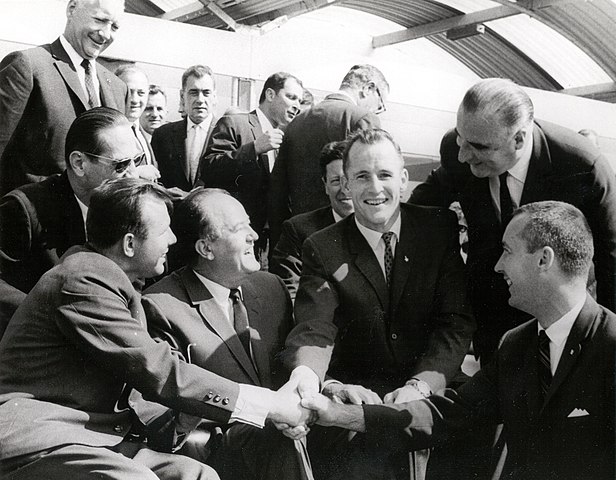
As the launch date approached, Gagarin seems to have realized that getting in the rocket would be a death sentence.
He begged a KGB friend of his to take the negative report to his superiors. The friend at last agreed, went to upper command…
…and disappeared. He, and everyone who’d seen the report, were all summarily fired or sent to work in humiliating postings in the arse-end of Siberia.
With Brezhnev in charge, rocking the boat simply meant you drowned.
On the day of the launch, Gagarin accompanied Komarov to the rocket pad. There, Gagarin had a moment of heroism. He kicked up a massive stink, demanding he be put in that rocket, shouting that it was his right as as Komarov’s superior…
But, no. Komarov didn’t fall for it. Instead, he said goodbye to Gagarin, and clambered into his execution chamber.
Komarov’s wife was in the control room, and they spent the minutes before launch saying goodbye over the radio, aware the cosmonaut wasn’t coming back, but unable to do anything to stop this horrific chain of events.
And so, on April 27, 1967, Yuri Gagarin was forced to stand helpless on the ground as the Soyuz carrying his friend failed in mid-air, reducing Vladimir Komarov to ash.
The cosmonaut never got over what had happened that day. The wide smile faded, replaced by a morose expression. Openness gave way to depression. Maybe it wouldn’t have lasted. Maybe Gagarin’s sunny side would have returned eventually.
But we’ll never know.
On March 27, 1968 – 11 months exactly after Komarov’s crash – Gagarin jumped in a MiG-15 for a routine flight. 96km northeast of Moscow, he crashed at high speed.
The impact killed Gagarin instantly. Aged just 34, the first spaceman was no more.
At the time, there were endless conspiracy theories surrounding Gagarin’s death. But, in 2013, formerly classified files were released showing that it was just another case of Brezhnev-era mismanagement.
That same day, an SU-15 jet had accidentally flown too low, passing incredibly close to Gagarin’s MiG. The huge aircraft had rolled Gagarin’s jet, causing it to spin out of control, sealing his fate.
Yuri Gagarin’s ashes were interred in the Kremlin Wall in Moscow on March 30, 1967, following a huge memorial parade. Shortly after, his teenage hometown changed its name from Gzhatsk to Gagarin in his honor.
Today, over half a century since Gagarin’s untimely death, it can still be hard to fully wrap your head round his achievement. While Neil Armstrong’s moonwalk first is probably more famous in the west, Gagarin’s flight was arguably far more impressive.
Prior to that spring day in 1961, no human had ever done anything beyond the confines of our Earth.
Every technological revolution, every great explorer, every brilliant scientist, all had been limited to this one pale speck in the cosmos.
And then came Yuri Gagarin.
The moment the cosmonaut reached orbit, a new horizon opened for humanity. The first man on the Moon, the space shuttle, the ISS; Nasa and SpaceX’s plans to land a human on Mars; China’s goal of a moonbase… all stem from one journey undertaken by this one peasant boy from Russia.
The story of humanity’s expansion into space may only just be beginning. But when the history books are finally written in one hundred, one thousand, even a million years, they will all agree on one thing.
It all started with Yuri Gagarin, the first man in space.
Sources:
ThoughtCo: https://www.thoughtco.com/yuri-gagarin-first-man-in-space-1779362
Independent’s biography, good details: https://www.independent.co.uk/news/science/yuri-gagarin-the-man-who-fell-to-earth-2257505.html
Geographics on the Soviet Space program: https://www.youtube.com/watch?v=VJoMsrLiuCo
Sergei Korolev: the rocket genius behind Yuri Gagarin: https://www.theguardian.com/science/2011/mar/13/yuri-gagarin-first-space-korolev
More on Yuri and Korolev: https://www.history.com/this-day-in-history/first-man-in-space
BBC Profile: https://www.bbc.com/news/science-environment-12460720
How Yuri Gagarin’s historic flight was nearly grounded: https://www.theguardian.com/science/2011/apr/06/yuri-gagarin-orbital-flight-1961
Detailed look at take-off and Yuri’s death: https://tmagazine.blogs.nytimes.com/2011/03/08/first-man-up/
Watching the flight as one of Gagarin’s relatives: https://www.bbc.com/news/science-environment-12875848
Gagarin’s mysterious death: https://www.history.com/news/what-really-happened-to-yuri-gagarin-the-first-man-in-space
Gagarin’s funeral (with photos): https://www.rferl.org/a/soviet-cosmonaut-gagarin-funeral-update/24940379.html
Star City: https://www.atlasobscura.com/places/star-city



